

Galaxy S20 Ultra, P40 Pro, OnePlus 8 Pro and Mi 10 Pro camera comparison
Every manufacturer claims that its new smartphone has the best camera. I took a look at four of the latest top smartphones to see if these promises are true.
In isolation, each of the four smartphones in this round delivers good to very good photos. However, the statement "clearly belongs to the top group with its camera" is too vague when it comes to details. Because there are still some big differences.
Four cameras for one hallelujah
Four cameras on the back are currently the gold standard for top smartphones. The main camera is complemented by a wide-angle and a telephoto lens on all models in this comparison. The fourth camera provides data for portrait shots with a blurred background or as a colour filter camera for special effects.
| Main camera | (Ultra) wide angle | Telephoto lens | fourth camera | |
|---|---|---|---|---|
| Huawei P40 Pro | 50 megapixel f/1.9 | 40 megapixel, f/1.8 | 12 megapixel, f/3.4 | 3D depth sensor |
| OnePlus 8 Pro | 48 megapixel, f/1.78 | 48 megapixel, f/2.2, 120 degrees | 8 megapixel, f/2.44 | Colour filter, 5 megapixel, f/2.4 |
| Samsung Galaxy S20 Ultra | 108 megapixel, f/1.8 | 12 megapixel, f/2.2 | 48 megapixel, f/3.5 | VGA 3D depth camera, f/1.0 |
| Xiaomi Mi 10 Pro | 108 megapixel, f/1.69 | 20 megapixel, f/2.2, 117 degrees | 8 megapixel, f/2.0 | 12 megapixel portrait, f/2.0 |
Zoom on the devil's own
The 50x or even 100x zoom is just Marketing. You can't really put it to good use. It starts with the fact that you actually need a tripod to take photos with this focal length - which means that the spontaneous element of smartphone photography is lost - and, above all, the image quality is subterranean. Examples:


I took aim at the Hamburger Michel from the roof of the office. Samsung has a 100x zoom, Huawei and Xiaomi have a 50x zoom on sale - although the software on the Mi 10 Pro makes its very own art out of the photo. Immediately after taking the photo, I could still see the clock on the church tower - just like with the P40 Pro - but then the software took over during post-processing and instead of sharpening the details, it produced this abstract art. And not just for this picture. OnePlus leaves it at a maximum 30x zoom, which is also the next directly selectable level below the 100x zoom at Samsung.


The results look better if you limit yourself to less zoom. Apart from Xiaomi, the results are presentable at 10x magnification. However, I like the photos from the Galaxy S20 Ultra and the P40 Pro a little better than the OnePlus 8 Pro. They have more detail.

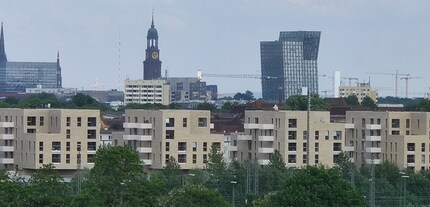


When the subject is bigger than expected
The P40 Pro has the smallest and the Galaxy S20 Ultra the widest wide angle. In the overall view, there are no other significant differences between the shots. [[image:35863471 "Huawei P40 Pro",35863472 "OnePlus 8 Pro"]] [[image:35863477 "For the photo, the section was enlarged by the Samsung and reduced by the Xiaomi."]]
Only a closer look - for example at the explanatory sign on the right of the wall - reveals differences in the level of detail.
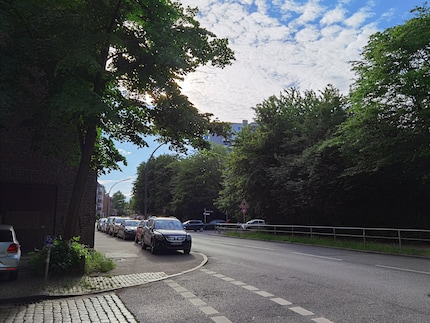
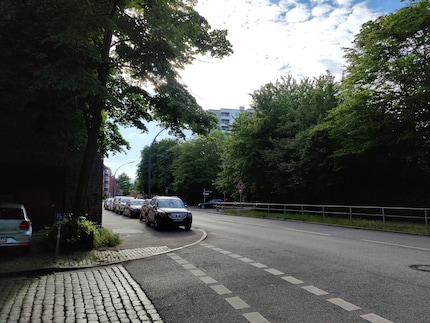
While the text on the panel is clearly legible on the Huawei and Xiaomi, it is difficult to decipher on the Samsung and OnePlus
HDR: When light and shadow come together
The camera's automatic mode already delivers decent results, but there are still plenty of scenes where the HDR mode can be very helpful. HDR attempts to harmonise areas of different brightness. The difference between the HDR effect being switched on and off is particularly evident in the clouds in the sky, here is a shot without HDR.
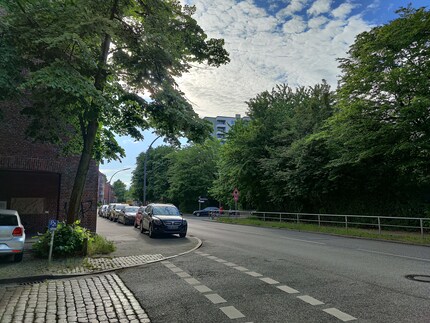
On the P40 Pro, I only discovered the HDR mode hidden under "More" when I was finalising the article and naturally tried it out. However, I couldn't see any difference and therefore didn't completely re-produce the images.
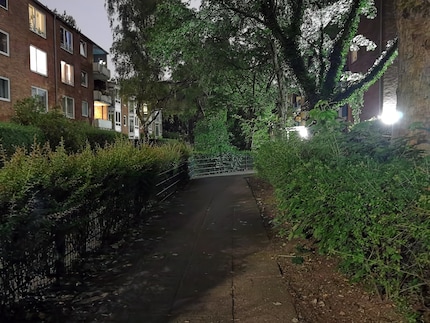
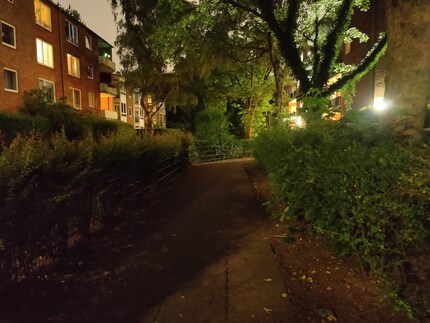
On the OnePlus 8 Pro, there is a big difference in the wall of the house, which is in the shade. The other three devices already brighten this area in the conventional automatic mode.
Colour: when it looks natural
When viewed individually, the colour reproduction of the individual (main) cameras looks very good. When the photos are placed next to each other, differences in saturation and radiance become clear. The Galaxy S20 Ultra delivers the most intense colours - which still look natural. Despite the noticeable differences, I find it difficult to decide whether I like the colour reproduction of the P40 Pro or OnePlus 8 Pro better. The colours of the Mi 10 Pro look faded in direct comparison.

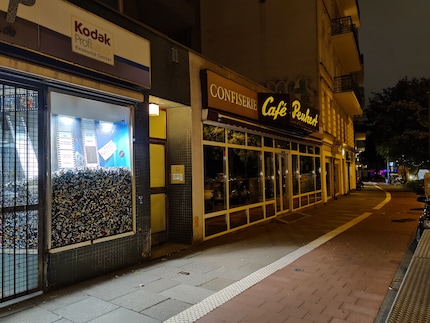
Night: When it gets dark
During the day, the differences in quality are not that great, even between smartphones with a price difference of several hundred euros. However, this changes when it gets dark.

Even in normal automatic mode, the P40 Pro and the OnePlus 8 Pro brighten up the images in the dark. The Galaxy S20 Ultra and the Mi 10 Pro, on the other hand, tend to show what my eye perceives. However, I still like the image from the Xiaomi camera a little better. The illuminated windows in the background are sharper. You have to accept a loss of quality compared to daylight shots with all four cameras.

The basic principle of night mode is simple. Longer exposure times give the software more information to calculate the final image. This is not only impressive in terms of brightness, but also in terms of the sharpness of the images. An exposure time of several seconds cannot actually be taken by hand without blurring. The software calculates the movements in night mode. You still need a steady hand, but you don't have to pack a tripod.
With Huawei and OnePlus, the images were already bright beforehand, but the night mode makes them sharper. Samsung succeeds best in turning night into day - and with a handheld exposure time of ten seconds.




Many different light sources are a big challenge for a camera. In this picture, there is the shop window, the front door with illuminated house number, small lamps in the background, the street lighting and the light pollution from the big city in the sky. While the OnePlus 8 Pro shows off the shop window best, the rest of the subject appears very yellow in comparison to the other shots. The P40 Pro, on the other hand, tends to mix red into the picture. The Mi 10 Pro leaves a lot to be desired in terms of detail and sharpness. In the end, the Galaxy S20 Ultra delivers the best picture overall and also gets the light pollution out of the sky the best.
Front camera: when you want a selfie
It is technically possible, but multiple cameras on the front of a smartphone have not yet become established. The exception in the field is the Huawei P40 Pro with a 3D depth sensor for portrait shots. Samsung, on the other hand, takes its wide-angle selfies with the same camera as the standard selfies.
| Front camera | |
|---|---|
| Huawei P40 Pro | 32 megapixel, f/2.2 + depth sensor |
| OnePlus 8 Pro | 16 megapixel, f/2.45 |
| Galaxy S20 Ultra | 40 megapixel, f/2.2 |
| Xiaomi Mi 10 Pro | 20 megapixel |
I have switched off all the preset beauty functions on the front cameras. After all, I want to know what the camera can do and not what the software is trying to do to make me look more beautiful.


In terms of quality, the four front cameras are close together and leave many competitors - especially much cheaper models - far behind. The photos here could also come from many a main camera. In terms of colour, the selfies from the P40 Pro and S20 Ultra are slightly more yellowish. In contrast, those of the OnePlus 8 Pro and Mi 10 Pro appear much cooler with more white. It is also noticeable that the sky is not overexposed in any of the selfies. Overall, I like the selfie from the OnePlus 8 the best.
What Samsung sells as a wide-angle selfie is rather standard compared to the other front cameras and the conventional selfie with Samsung is simply very close to the face.

Unlike the main camera, Huawei does not offer a selectable HDR mode for its front camera. This is why we only look at the HDR selfies on the other three smartphones. Compared to the conventional selfies, the differences are comparatively small, as these have already coped well with strong contrasts. Nevertheless, a sharpening can definitely be seen - especially in the clouds. The OnePlus 8 Pro puts a halo around the head. I feel honoured, but it still doesn't look really good.

You can find all photos in original resolution here.
Conclusion: Decision in the photo finish
I find it difficult to choose a clear winner from this camera comparison. All four smartphones are close together and each has different strengths and weaknesses. The 50x and 100x zoom are just marketing blah-blah and can't be used in reality. I think Samsung and Huawei are ahead with the 10x zoom. Huawei and Xiaomi have the best wide-angle shots. OnePlus has the best selfies and the most striking HDR mode, Samsung convinces me the most in terms of colour and at night.
If I look at which camera I have praised the most, the Galaxy S20 Ultra wins. It is closely followed by the Huawei P40 Pro and the OnePlus 8 Pro, which share second place. The Xiaomi Mi 10 Pro follows in ungrateful fourth place after the close photo finish.
When I was but a young student, I'd sit in my friend's living room with all my classmates and play on his SuperNES. Since then I've had the opportunity to test out all the newest technology for you. I've done reviews at Curved, Computer Bild and Netzwelt, and have now arrived at Galaxus.de.





